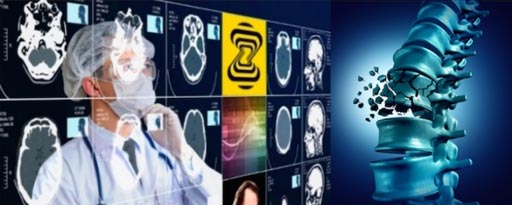Deep-Learning Algorithm Detects Vertebral Compression Fractures
By MedImaging International staff writers
Posted on 01 Feb 2017
A novel algorithm can differentiate between a vertical compression fracture (VCF) and more ubiquitous degenerative endplate changes and osteophytes.Posted on 01 Feb 2017
The Zebra Medical Vision VCF algorithm automatically segments the vertebral column in order to identify and localize compression fractures. Diagnosing VCF’s is of critical importance for implementation of both primary (therapeutic) and secondary (preventative) osteoporotic interventions. As such, implementation of the algorithm can help prevent a large number of VCFs, allowing for better preventative and overall care, as well as reducing long term healthcare costs for providers.

Image: A novel algorithm helps detect vertical compression fractures (Photo courtesy of Zebra Medical Vision).
The algorithm was developed utilizing a combination of traditional machine vision segmentation and convolutional neural net (CNN) technology, and can be applied to any computerized tomography (CT) scan of the chest, abdomen, and/or pelvis. As such, it will become the latest addition to a line of automated tools announced by Zebra Medical Vision, among them algorithms that automatically detect low bone mineral density, breast cancer, fatty liver, coronary artery calcium, emphysema, and more.
“Radiology is headed for a personnel crisis for a number of reasons: the increase in population, especially the elderly and ill, increased exposure of the developing countries to radiology services, and the increase in the quantity of information from imaging devices, while the number of radiologists has not changed,” said Elad Benjamin, co-founder and CEO of Zebra Medical Vision. “We want to help radiologists analyze the images, while saving time, and to free them, so that they can devote their efforts to the more complex cases.”
“Research has shown that radiologists miss up to 50% of vertebral fractures, since they are usually focused on looking for other features,” added Kassim Javiad, MD, of Oxford University Hospitals (United Kingdom). “In the UK, with our proven coordinated care programs for effective fracture prevention, we believe that early detection of such fractures can yield both better care and significant healthcare cost savings.”
VCFs are a direct cause of morbidity, decreasing mobility and functional status particularly among the elderly. Osteoporotic VCFs affect up to one in four of post -menopausal women and nearly one in seven men over the age of 65. Timely surgical or minimally invasive treatment of VCF’s is effective but under-utilized, in part because less than one third of VCF’s are effectively diagnosed. Although VCF’s may be the result of infection, trauma or malignancy, the vast majority are a manifestation of osteoporosis, especially in individuals over the age of 50.














